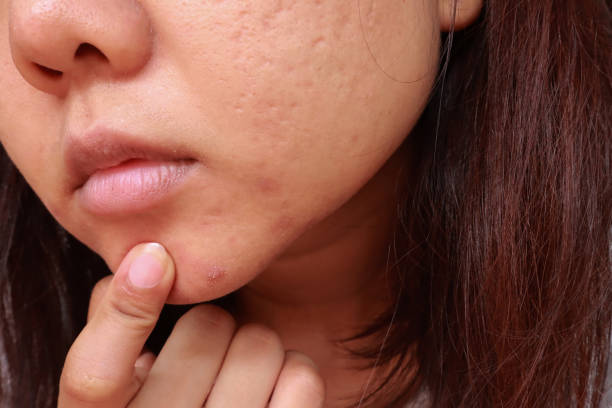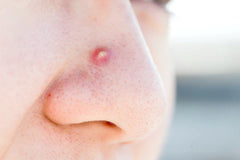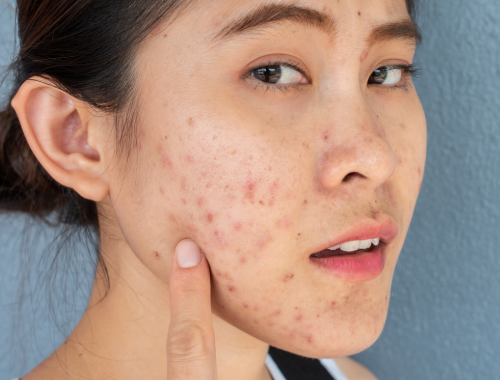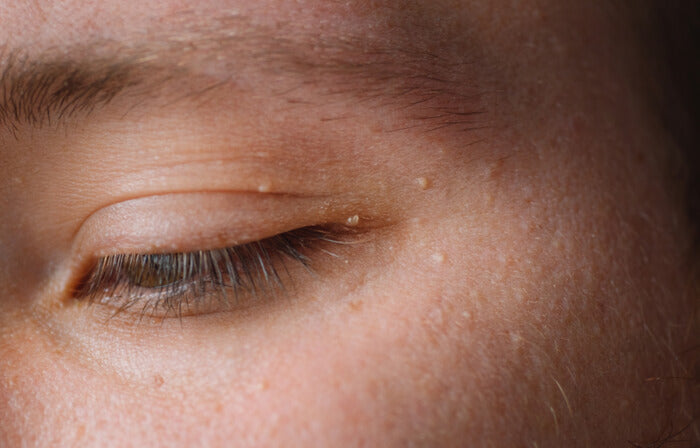
Pustules: Effective Strategies for Clear Skin
What are Pustules?
Pustules are a type of skin lesion commonly associated with various skin conditions, most notably acne. They are small, raised, pus-filled bumps on the skin's surface that can range in size from a pinpoint to several millimeters in diameter. Pustules are typically surrounded by a red, inflamed base and can appear anywhere on the body, although they are most commonly found on the face, back, chest, and shoulders.
Pustules are a result of the body's natural defense mechanism against infection and inflammation. They contain a mixture of dead white blood cells, bacteria, and tissue debris, which gives them their distinctive white or yellow appearance. These fluid-filled sacs can be unsightly and sometimes painful, leading many individuals to seek ways to manage and treat them.

What is a Pustule vs. Papules?
Pustules and papules are common skin conditions with distinct features. Pustules, known for their white or yellowish pus-filled centers, are surrounded by red, inflamed bases, making them prominent. They are often linked to inflammatory skin issues like acne or folliculitis and tend to be larger. On the other hand, papules are smaller, raised bumps on the skin without visible pus centers. They are typically red, pink, or skin-colored and may be inflamed. Associated with various skin conditions, including acne, eczema, or contact dermatitis, papules are generally smaller in size. Recognizing these differences is crucial for accurate diagnosis and effective treatment.
What is the Main Cause of Pustules?
Pustules are primarily caused by inflammation and infection of hair follicles and oil glands in the skin. The main contributing factors to the formation of pustules include:
- Acne: Pustules are a common feature of acne, particularly in the inflammatory type of acne. The sebaceous glands produce excess oil, which can mix with dead skin cells and clog hair follicles. When these clogged follicles become infected with bacteria, they can lead to the development of pustules.
- Folliculitis: Folliculitis is an infection or inflammation of the hair follicles. It can occur anywhere on the body and often presents as pustules. Folliculitis can be caused by bacteria, fungi, or viruses.
- Skin Infections: Pustules can also result from various skin infections, including impetigo, a contagious bacterial infection, and herpes simplex, a viral infection. These conditions can lead to the formation of fluid-filled pustules.
- Rosacea: Pustules can be a symptom of rosacea, a chronic skin condition characterized by redness, flushing, and sometimes pustules on the face. Rosacea-related pustules may not be associated with bacterial infections.
Understanding the underlying cause of your pustules is crucial for effective treatment and management. In the next section, we will explore how to get rid of pustules and whether it's advisable to remove pus from them.
What Gets Rid of Pustules?
Getting rid of pustules often involves a combination of skincare practices, lifestyle adjustments, and, in some cases, medical treatments. Here are some methods to manage and eliminate pustules:
- Good Skincare Routine: Maintaining a consistent and gentle skincare routine is crucial. Use a mild cleanser to wash your face and affected areas, and avoid harsh scrubbing, which can worsen inflammation. Non-comedogenic (non-pore-clogging) moisturizers and products can help keep the skin balanced.
- Topical Treatments: Embracing natural remedies can be an effective approach to managing pustules. Ingredients such as honey, tea tree oil, or aloe vera, known for their anti-inflammatory and antibacterial properties, can help alleviate inflammation and combat the bacteria responsible for pustules.
- Avoid Squeezing: It's essential to resist the temptation to squeeze pustules. Squeezing can push bacteria deeper into the skin, causing more significant inflammation and potential scarring.
- Warm Compress: Applying a warm, moist compress to the affected area can help reduce inflammation and encourage pustules to drain naturally.
Should I Remove Pus from Pustules?
It's generally not recommended to forcefully remove pus from pustules by squeezing or picking at them. Here's why:
- Risk of Infection: Squeezing pustules can introduce more bacteria into the surrounding skin, potentially leading to further infection or the development of new pustules.
- Scarring: Squeezing can cause damage to the skin, leading to scarring, which may be permanent. Acne scars can be challenging to treat.
- Pain and Discomfort: Squeezing pustules can be painful and may result in increased inflammation and redness.
If a pustule is ready to drain on its own, it will typically do so naturally. To aid in the healing process, you can apply a warm, moist compress to the area. This can help soften the skin and encourage the pustule to drain without the need for squeezing.
How Can I Prevent Pustules?
Preventing pustules and maintaining healthy skin involves adopting good skincare habits and making certain lifestyle changes. Here are some tips to help prevent pustules:
- Regular Cleansing: Cleanse your face and affected areas with a gentle, non-comedogenic cleanser twice a day to remove dirt, excess oil, and bacteria from the skin's surface.
- Avoid Overwashing: While cleansing is important, excessive washing can strip the skin of its natural oils, leading to increased oil production and potential pustule formation. Stick to a morning and evening routine.
- Moisturize: Use a non-comedogenic moisturizer to keep the skin hydrated without clogging pores.
- Hands Off: Avoid touching your face, as your hands can transfer bacteria and oils to your skin. Refrain from picking or squeezing pustules.
- Balanced Diet: Eat a balanced diet rich in fruits, vegetables, and whole grains. Some individuals find that certain foods, like dairy or high-glycemic foods, can trigger acne and pustule formation. Be mindful of your diet's impact on your skin.
- Stress Management: High stress levels can exacerbate skin conditions, so practice stress-reduction techniques such as meditation, yoga, or deep breathing exercises.
- Regular Exercise: Physical activity can help improve circulation and reduce stress, which may contribute to healthier skin. Shower after exercise to remove sweat and bacteria from your skin.
- Avoid Harsh Products: Be cautious with skincare products and makeup. Opt for those labeled as non-comedogenic and avoid products that can irritate the skin.
- Change Bedding: Change pillowcases and bedsheets regularly to reduce the transfer of oils and bacteria from your bedding to your skin.
By following these preventive measures and maintaining a consistent skincare routine, you can minimize the risk of developing pustules and promote healthy, clear skin. In conclusion, pustules are a common skin concern, and understanding their causes and how to manage them is essential for achieving clear and healthy skin.






